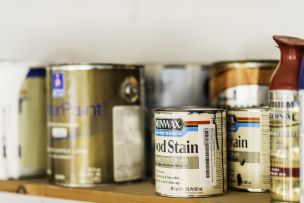Posted on: 10th Jun 2019
Andusia Explains Hazardous Waste
Waste is classified as hazardous if it presents a hazard to the environment or health. This includes things like irritants, oxidisers, corrosives, mutagenic, explosive, infectious, flammable, carcinogenic, toxic and ecotoxic. There are others, but these are the main categories. Contact Andusia for firm advice on your specific waste streams.
There is a classification list of Hazardous Properties (HP), numbers HP1-HP15. Andusia’s Hazardous Waste Manager, Fraser Cutting, explains the most common:
Explosive (HP1)things are just that; things that may explode. Pyrotechnics, flares, some car airbags, picric acid and munitions are all common explosives. It goes without saying that these all need very specialised handling and disposal.
Oxidising chemicals (HP2) will cause fires if mixed with or applied to organic materials in particular. For example, bleaches commonly contain oxidising agents like hydrogen peroxide or sodium hypochlorite.
Flammable material (HP3)will readily support fire. There are numerous definitions for this, but commonly, liquids with a flash point of less than 60 Celsius such as white spirit.
Irritant waste (HP4)is material that which on application to the skin or eye causes damage. It would be something similar to a drying of the skin, as opposed to a burn. The most common examples of irritants are household cleaners and hand soap. Hand soap is designed to take a layer of oil from the skin, so excessive use will expose the skin itself, leading to surface irritations forming, in the guise of red marks
Toxic wastes (HP6) are poisons that will have an acute toxic effect following entry into the body by means of ingestion via the skin or inhalation. There are some sub categories of this, so check that it doesn’t fall into one of those first.
Carcinogenic (HP7) material will induce or increase the chance of cancer. There are many examples of these including asbestos and benzene.
Corrosive waste (HP8) will cause an actual burn when applied to the skin. The common example of a corrosive substance is mineral acids, like hydrochloric acid and sulphuric acid. These will corrode metals as well.
Infectious waste (HP9)is waste containing viable micro-organisms or their toxins which are known to lead to disease in humans or other living organisms. Generally, it is sourced from hospitals and other medical establishments. This waste is very separate from the rest of hazardous waste.
Mutagenic wastes (HP11)cause a change in the structure of organisms at a cellular level. Because of this, some mutagens are also carcinogens, but by no means always. Equally, some peroxides are also mutagens. These can be tricky to classify, and it often depends on the use and environment.
Ecotoxic (HP14)materialsare natural or synthetic pollutants, which have a toxic effect on the constituents of ecosystems, animal (including human), vegetable and microbial.
If you would like to speak to Fraser about your hazardous and clinical waste requirements, please don’t hesitate to contact him on +44 (0)7824 567603 or email fraser@andusia.co.uk.

